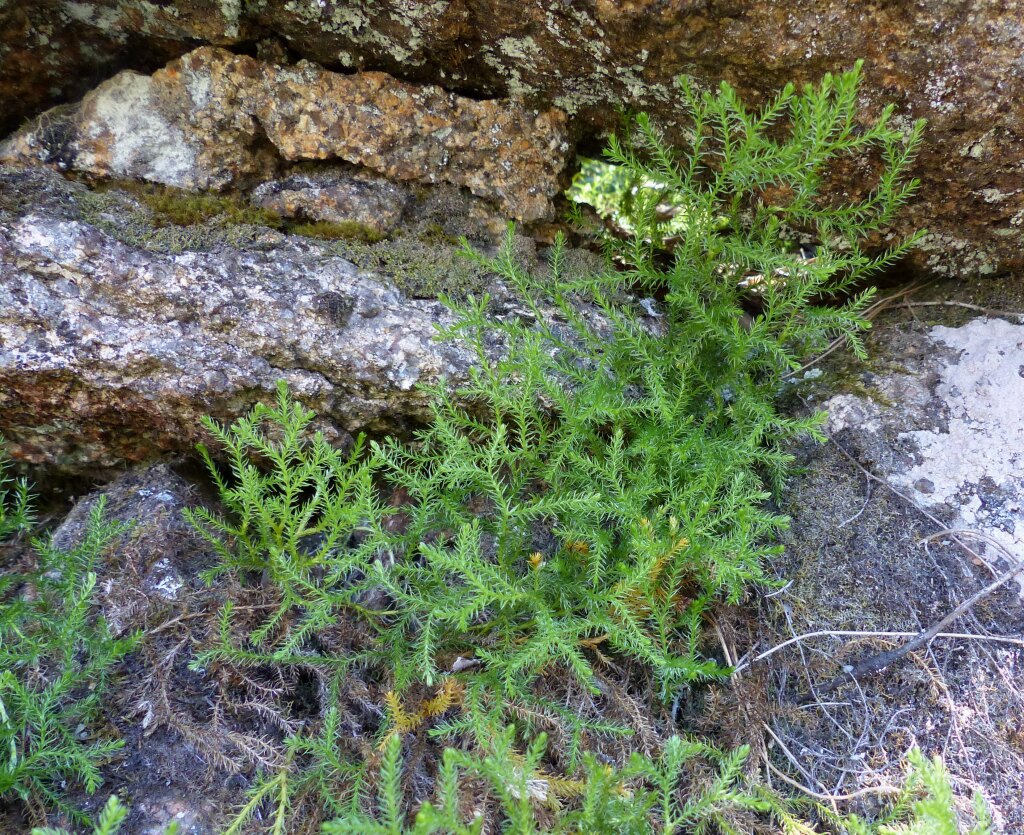Lycopodium fastigiatum
R.Br. Mountain ClubmossRhizome creeping, branched, usually underground, main stems distant. Aerial branches erect, bushy and much-branched, usually less than 30 cm tall, leafy throughout; main stem rigid, occasionally trailing or almost decumbent; ultimate branchlets more or less erect and close to main axis. Leaves spirally arranged and closely overlapping, spreading, linear-lanceolate, 3–5 mm long, less than 1 mm wide; base decurrent; apex incurved, sharply acute or mucronate. Strobili terminal, solitary or paired, sometimes branched, erect, narrow, 2–5 cm long, on slender stalk bearing distant scale-like leaves. Sporophylls closely overlapping, broadly ovate; margins entire, membranous, pale; apex long, spreading or recurved.
WPro, HSF, HNF, MonT, HFE, VAlp. Also NSW, Tas. (including Cape Barren Is.). New Zealand (including minor islands). In grassland, open-scrub or among rocks in alps or sub-alps (all East Gippsland populations are in the Mt Delegate area), with an isolated occurrence on the summit of Mount LaTrobe on Wilsons Promontory.
Plants are commonly spindly and less densely foliose in shaded habitats, and stunted and tinged with orange in exposed alpine areas. Occasionally, vegetative plants can be almost prostrate (e.g. on Mt Baw Baw) and so resemble the Tasmanian and New Zealand species, Lycopodiella diffusa (R. Br.) B. Ollg.
Entwisle, T.J. (1994). Ferns and allied plants (Psilophyta, Lycopodiophyta, Polypodiophyta). In: Walsh, N.G.; Entwisle, T.J., Flora of Victoria Vol. 2, Ferns and Allied Plants, Conifers and Monocotyledons, pp. 13–111. Inkata Press, Melbourne.
 Spinning
Spinning


